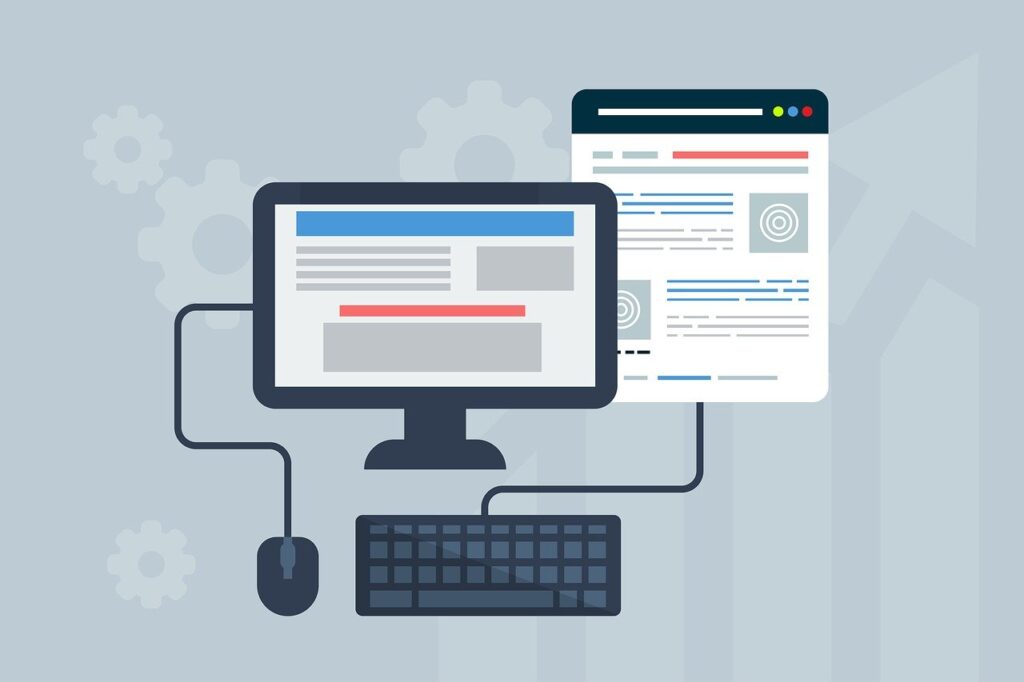Setting the Stage: Introducing Traditional and Digital Marketing
To discuss the difference between traditional marketing vs digital marketing, we have to understand it separately and its values too. Let’s discuss:

Traditional Market:
Traditional marketing relies on physical locations and face-to-face interactions, while digital marketing operates online, enabling businesses to reach global audiences, track performance, and optimize campaigns efficiently.
Digital Marketing:
Digital marketing offers precise targeting, real-time analytics, scalability, and cost-effectiveness, empowering businesses to reach diverse audiences, measure performance, and drive growth effectively in the digital age.
A brief comparison in between traditional marketing vs digital marketing:
- In contrast to traditional markets, where goods and services are exchanged in physical locations through face-to-face interactions, digital marketing operates in the virtual realm of the Internet.
- Traditional markets build on personal connections and local presence, while digital marketing expands reach globally, tracks performance in real-time, and adjusts strategies based on data insights.
- It’s a dynamic approach that complements traditional marketing methods, providing businesses with the flexibility to adapt to the ever-changing demands of the digital age while retaining the authenticity and charm of traditional marketplaces.
Unveiling Essentials: A Brief Look at Key Features
Scope Unveiled
Traditional Marketing:
- Relies on offline strategies like print ads, TV commercials, radio, direct mail, and in-person presentations.
- Target’s specific geographic locations or regions.
- Involves physical materials and face-to-face interactions.
- Scope limited by production costs, distribution channels, and reach of traditional media.
Digital Marketing:
- Utilizes online channels like websites, social media, search engines, email, mobile apps, and online ads.
- Offers a wider range of tactics for global targeting.
- Allows real-time tracking of performance metrics.
- Potential to reach global audiences, scalable and cost-effective.
- Provides precise targeting options and measurable results for quick strategy adjustments.
Reaching Your Audience
Certainly! “Reach” in marketing refers to the total number of people or potential customers who are exposed to a particular marketing message or campaign. Let’s discuss the concept of reach in both traditional and digital marketing:
Traditional Marketing Reach:
Traditional marketing channels offer:
- Print Media: Newspapers, magazines, flyers, and billboards reach broad local audiences.
- Broadcast Media: TV and radio ads reach wide regional or national audiences.
- Direct Mail: Target specific households or addresses.
However, traditional marketing’s reach is limited by factors like geography and declining print readership. Measurement is also challenging compared to digital channels.
Digital Marketing Reach:
Helpful tools to reach through digital marketing:
- Website: Optimized sites attract global visitors.
- Social media: Platforms target audiences by demographics, interests, and location.
- Search engines: SEO/SEM drive visibility in search results.
- Email Marketing: Direct inbox engagement with subscribers.
- Online Advertising: Targeted ads on websites and apps.
Digital marketing allows precise targeting and real-time analytics for measuring effectiveness.
Maximizing ROI: Traditional vs. Digital Marketing Costs
Traditional Marketing:
- High Initial Costs: Expensive upfront investment for print, TV, radio, or billboard ads.
- Limited Targeting: Less precise audience targeting leads to wasted resources.
- Difficult Measurement: Challenges in tracking impact on customer behavior or sales.
- Fixed Costs: Costs remain constant regardless of reach or engagement.
Digital Marketing:
- Lower Barrier to Entry: Requires minimal upfront investment.
- Targeted Advertising: Precise targeting minimizes wasted ad spend.
- Measurable Results: Real-time analytics track metrics for optimization.
- Flexible Budgeting: Adjust spending based on campaign performance.
Measurement and Analytics:
Traditional Marketing Measurement and Analytics:
- Limited Tracking: Few opportunities for tracking and analytics.
- Surveys and Market Research: Reliance on surveys and studies for insights.
- Brand Awareness Metrics: Focus on metrics like reach and recall.
- Delayed Results: Results take time to materialize.
Digital Marketing Measurement and Analytics:
- Real-Time Data: Immediate insights into campaign performance.
- Advanced Analytics Platforms: Access to detailed user behavior data.
- Conversion Tracking: Precise tracking of desired actions.
- A/B Testing: Experimentation for continuous optimization.
- ROI Calculation: Straightforward calculation of return on investment
Summarize to navigating marketing: Traditional vs. Digital
- Traditional Marketing:
- Wide reach via print, broadcast, and direct mail.
- Limitations like geographic constraints and measurement challenges.
- Digital Marketing:
- Targeted reach through websites, social media, search engines, email, and online ads.
- Real-time analytics for precise measurement and optimization.
Conclusion: Traditional marketing offers broad reach but faces limitations. Digital marketing provides targeted reach and measurable results, aligning better with the dynamics of the digital age.

Best Hosting Plan Starting from ₹149 Only.
To create an impressive website for your brand. You need to get a premium hosting plan before proceeding. This Hosting gives you a better result with creative design support.